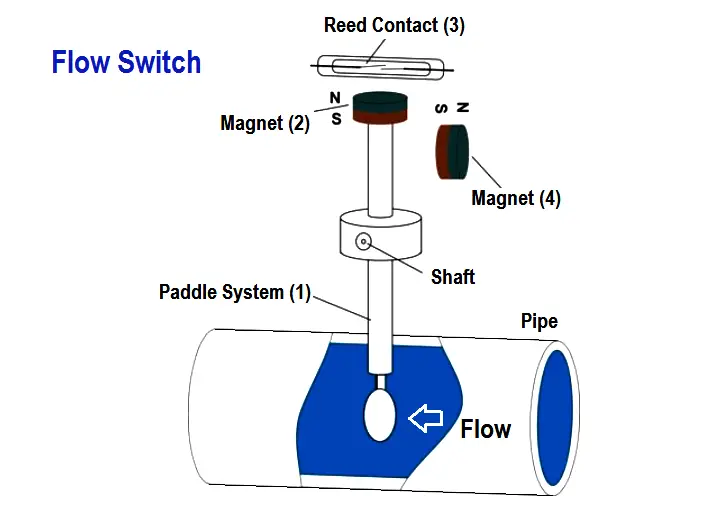Flow switches have wide use in gas control and monitoring. There are many viable models used in airflow gauging.
Flow measurement is a wide area, and many tools are used to get the accurate flow of fluids. One standard instrument in use in this field is the Flow Switch. Let's examine what this tool is and suitable for your daily use in flow rate measurement.
Before we take a look at anything else, it wise to first define a Flow Switch. A flow switch has many names used to refer to it, but the most common two are a vane switch and a sail switch. The sail switch is any mechanical tool that can monitor and control the flow of a liquid, gas, or steam. It works by using a trip signal that either starts or stops the fluid flow depending on a preset limit.
How flow switches work?
To get a real sense of a switch's work, you must know how the switch works. Most switches have a paddle or magnetic trigger in the tube or pipe with the fluid. The trigger is linked to a circuit; hence it can cut the current when necessary.
The paddle is moved or spun by the Flow Switch's fluid while the paddle sends the signal back to the circuit or a transducer. The transducer takes the signal into the transmitter. The work of the transmitter is to gauge the signal against preset parameters. The transmitter either starts or stops the flow by sending a signal to the circuit board.
Some of the preset action that a switch can do if the gauged parameter is below or above the present one is to activate an alarm, power on the fluid pump, diverting the flow of gases, or shutting off parts of the setup that can be affected by such a flow or pressure.
When the liquids or gases in a system are extremely reactive, physically damaging, or contaminated, it's often not wise to have an intrusive flow switch. Luckily many sensors work non-intrusively to give precise gauges. Ultrasonic and magnetic switches are the best fit depending on the fluid in use. These switches work by sending a signal in the fluid and getting the rate of flow. The switches are not affected by the flow rate as they do not have moving parts that are susceptible to wear and tear. Rotor flow switches use a tapered tube with a float to gauge, control the rate of flow.
Water is the most common fluid for home and work use; therefore, you would be interested in knowing what options are available for a consumer in picking a water FLow Switch. Sprinklers are used in gardening at home or even in terraces in the office space. It is costly to have sprinklers work all day and waste the water; on the other hand, it is difficult to manually switch on and off the sprinkler. Most sprinklers come with a flow sensor to help you handle all the above issues. The tool's primary duty in the setup is to detect when water in the sprinkler, pipe, or valve exceeds the set flow rate.
The switch can then trip an alarm to let the user check if an issue needs to be sorted. As a bonus, most of the switches in the sprinkler have a timer that gauges the flow rate at a given time and delay giving a signal unless it's vital.
The thermal flow switches are the most used models in firms! These switches use heat transfer laws to give the right readings directly. They are popular in marine, HVAC, and food and beverage.
Final word
Users have adopted flow switches, which are useful for reducing the waste of resources and informing technical teams on early handling issues. Due to the Flow Switch deployment, auto-adjust the volume and rate of flow and keep water pumps from dry.






